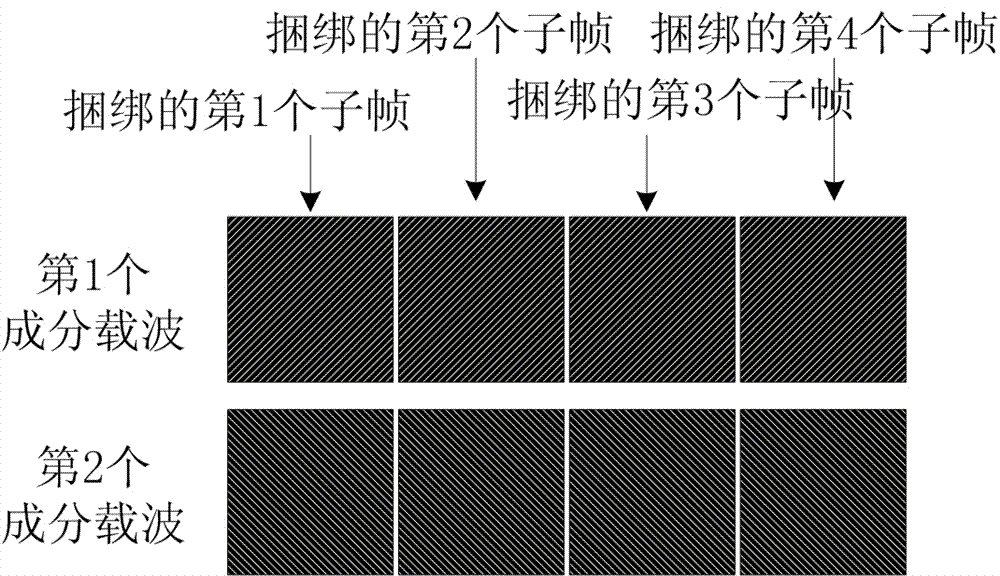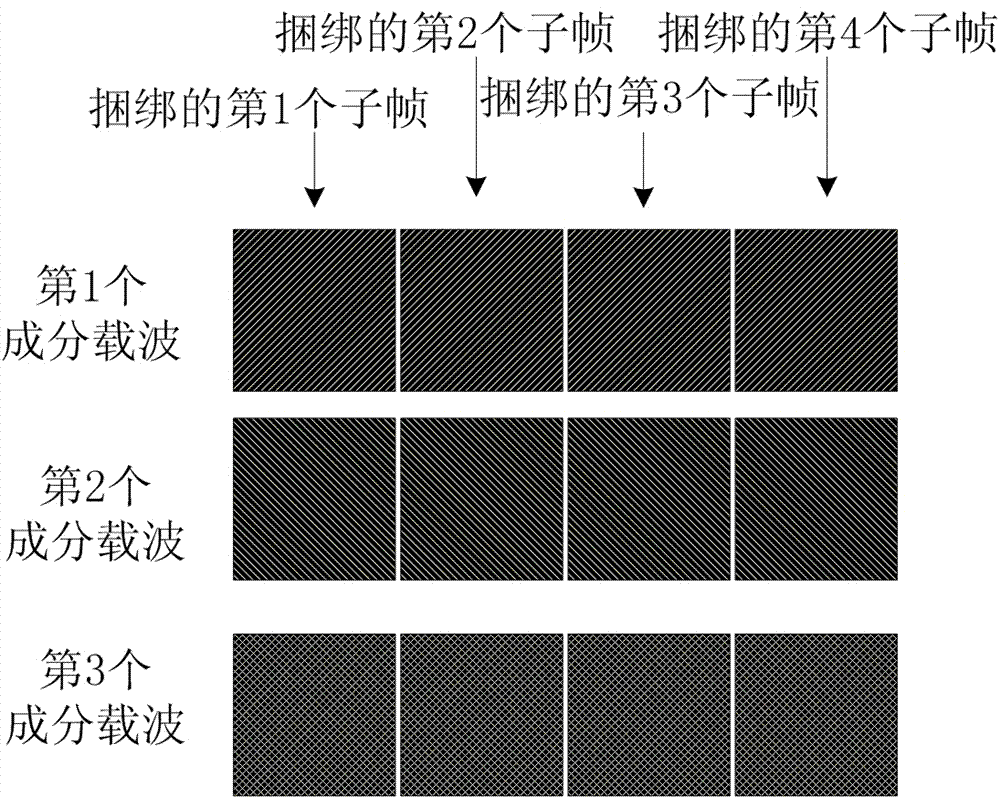Method and system for dispatching physical uplink shared channel (PUSCH)
A technology of physical uplink sharing and scheduling methods, which is applied in the field of advanced long-term evolution mobile communication systems, can solve problems such as unfavorable base station demodulation, average power reduction of resource blocks, etc., and achieve the effect of increasing frequency diversity gain and improving system performance
- Summary
- Abstract
- Description
- Claims
- Application Information
AI Technical Summary
Problems solved by technology
Method used
Image
Examples
specific Embodiment 1
[0044] Such as figure 2 As shown, the base station selects two activated component carriers for the user equipment and schedules the physical uplink shared channel of the user equipment in a subframe bundling manner to transmit the same data. The frequency resource allocated by one component carrier is one resource block, the frequency resource allocated by the other component carrier is one resource block, and the modulation mode is quadrature phase shift keying. The user equipment simultaneously sends data on resource blocks allocated in each subframe.
specific Embodiment 2
[0045] Such as image 3 As shown, the base station selects 3 activated component carriers for the user equipment and schedules the physical uplink shared channel of the user equipment in a subframe bundling manner to transmit the same data. The frequency resources allocated by the three component carriers are all one resource block, and the modulation methods are all quadrature phase shift keying. The user equipment simultaneously sends data on resource blocks allocated in each subframe.
specific Embodiment 3
[0046] Such as Figure 4 As shown, the base station selects 4 activated component carriers for the user equipment and schedules the physical uplink shared channel of the user equipment in a subframe bundling manner to transmit the same data. The frequency resources allocated by these 4 component carriers are all one resource block, but the user equipment only has 3 component carriers in each subframe of the 4 bundled subframes to transmit at the same time, and each subframe in each of the 4 bundled subframes The component carrier is forbidden to transmit once in turn (it can also be forbidden to transmit once in a non-rotational manner), and the modulation method is quadrature phase shift keying.
PUM
 Login to View More
Login to View More Abstract
Description
Claims
Application Information
 Login to View More
Login to View More - R&D
- Intellectual Property
- Life Sciences
- Materials
- Tech Scout
- Unparalleled Data Quality
- Higher Quality Content
- 60% Fewer Hallucinations
Browse by: Latest US Patents, China's latest patents, Technical Efficacy Thesaurus, Application Domain, Technology Topic, Popular Technical Reports.
© 2025 PatSnap. All rights reserved.Legal|Privacy policy|Modern Slavery Act Transparency Statement|Sitemap|About US| Contact US: help@patsnap.com



